-
 Bitcoin
Bitcoin $118800
-0.14% -
 Ethereum
Ethereum $4215
-0.42% -
 XRP
XRP $3.137
-1.39% -
 Tether USDt
Tether USDt $1.000
0.01% -
 BNB
BNB $801.4
-0.34% -
 Solana
Solana $174.5
-4.67% -
 USDC
USDC $0.0000
0.01% -
 Dogecoin
Dogecoin $0.2227
-4.63% -
 TRON
TRON $0.3437
1.55% -
 Cardano
Cardano $0.7720
-3.53% -
 Hyperliquid
Hyperliquid $43.12
-4.42% -
 Chainlink
Chainlink $21.09
-4.78% -
 Stellar
Stellar $0.4308
-2.98% -
 Sui
Sui $3.650
-5.39% -
 Bitcoin Cash
Bitcoin Cash $576.9
1.28% -
 Hedera
Hedera $0.2456
-4.71% -
 Ethena USDe
Ethena USDe $1.001
-0.02% -
 Avalanche
Avalanche $22.80
-4.05% -
 Litecoin
Litecoin $120.3
-2.70% -
 Toncoin
Toncoin $3.378
1.24% -
 UNUS SED LEO
UNUS SED LEO $8.975
-1.00% -
 Shiba Inu
Shiba Inu $0.00001289
-4.88% -
 Uniswap
Uniswap $10.95
0.54% -
 Polkadot
Polkadot $3.851
-4.86% -
 Cronos
Cronos $0.1661
2.05% -
 Dai
Dai $1.000
0.02% -
 Ethena
Ethena $0.7820
-0.17% -
 Bitget Token
Bitget Token $4.391
-1.26% -
 Monero
Monero $270.3
0.77% -
 Pepe
Pepe $0.00001120
-6.72%
How are digital signatures used in blockchain transactions?
Digital signatures in blockchain ensure secure, verifiable transactions using private keys and ECDSA, preventing fraud and double spending.
Aug 12, 2025 at 01:42 am
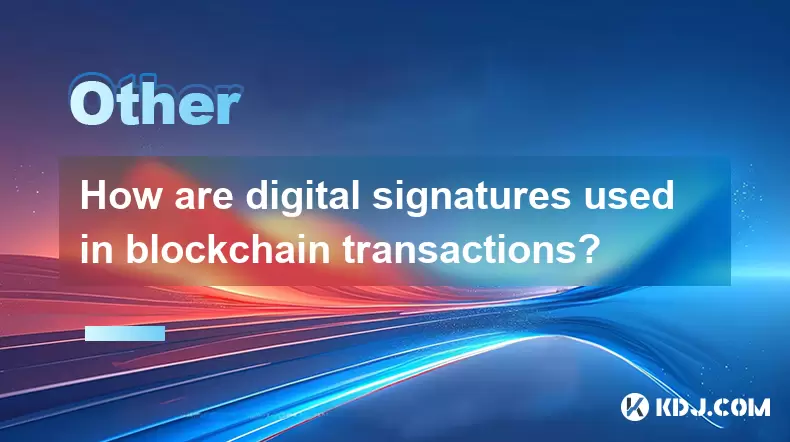
Understanding Digital Signatures in Blockchain
Digital signatures play a foundational role in securing blockchain transactions. They ensure the authenticity, integrity, and non-repudiation of data exchanged across decentralized networks. When a user initiates a transaction on a blockchain, they must prove ownership of their digital assets without revealing their private key. This is where digital signatures come into play. These cryptographic tools are created using public-key cryptography, specifically algorithms like Elliptic Curve Digital Signature Algorithm (ECDSA), which is widely used in Bitcoin and Ethereum.
Each blockchain user possesses a private key and a corresponding public key. The private key is a secret number known only to the owner, while the public key can be shared openly. When a transaction is created, the sender uses their private key to generate a unique digital signature for that specific transaction. This signature is mathematically tied to both the transaction data and the private key, making it nearly impossible to forge.
How Digital Signatures Are Generated
The process of generating a digital signature involves several precise steps rooted in cryptographic computation. To begin, the transaction data—such as sender address, receiver address, amount, and timestamp—is hashed using a cryptographic hash function like SHA-256. This produces a fixed-size digest of the transaction, ensuring any change in the data alters the hash completely.
- The sender’s wallet software takes this hash and combines it with their private key
- Using ECDSA, the software performs mathematical operations involving elliptic curve multiplication and modular arithmetic
- The output is a pair of values: r and s, which together form the digital signature
- This signature is then attached to the transaction before it is broadcast to the network
The resulting signature is unique to both the transaction and the private key. Even a minor change in the input data or key will produce a completely different signature, which helps prevent tampering.
Verification of Digital Signatures on the Blockchain
Once a transaction is submitted to the blockchain network, nodes must verify its legitimacy before including it in a block. Verification does not require the private key; instead, it uses the sender’s public key, the transaction data, and the attached signature. The process ensures that only the rightful owner could have authorized the transaction.
- Nodes first recompute the hash of the transaction data using the same algorithm (e.g., SHA-256)
- They then apply the ECDSA verification algorithm using the public key, the hash, and the signature components (r, s)
- The algorithm checks whether the mathematical relationship between these elements holds true
- If the verification passes, the transaction is considered authentic and is eligible for inclusion in the blockchain
This step is crucial for maintaining trust in a decentralized environment where no central authority validates transactions. The verification process is deterministic—given the same inputs, every node will reach the same conclusion.
Role of Digital Signatures in Preventing Double Spending
One of the core challenges in digital currencies is preventing double spending, where a user attempts to spend the same funds more than once. Digital signatures help mitigate this by binding each transaction to a unique cryptographic proof. Once a transaction is signed and broadcast, the network recognizes it as a valid claim on the sender’s balance.
If a malicious actor tries to reuse the same inputs in another transaction, the second transaction will either:
- Fail verification because the inputs are already spent
- Have a different transaction hash, requiring a new valid signature
- Be rejected by nodes that have already recorded the original transaction in the mempool or blockchain
Because each digital signature is tied to a specific transaction hash, copying a signature to a different transaction will not pass verification. This cryptographic binding ensures that each transaction is unique and non-reusable, even if the same private key is used.
Wallet Integration and User Experience
Most blockchain wallets abstract the complexity of digital signatures from end users. However, understanding how they operate behind the scenes is essential for security. When a user clicks “Send” in a wallet interface, the following occurs automatically:
- The wallet constructs the transaction with all necessary fields
- It retrieves the private key from secure storage (often protected by a passphrase or hardware module)
- The wallet computes the transaction hash and generates the digital signature using ECDSA
- The signature and public key are embedded in the transaction
- The signed transaction is relayed to the peer-to-peer network
Hardware wallets enhance security by ensuring the private key never leaves the device. The signing process occurs internally, and only the final signature is sent to the computer. This prevents malware from stealing the key during transaction signing.
Security Implications and Best Practices
The security of digital signatures relies entirely on the confidentiality of the private key. If a private key is exposed, an attacker can generate valid signatures and drain the associated wallet. Therefore, users must follow strict security practices:
- Store private keys in offline environments such as hardware wallets or paper wallets
- Avoid entering private keys on internet-connected devices unless absolutely necessary
- Use wallets that support deterministic key generation (e.g., BIP-39 mnemonics) for easier backup and recovery
- Regularly update wallet software to patch vulnerabilities in cryptographic libraries
Additionally, blockchain networks themselves are designed to detect invalid signatures. Any transaction with a malformed or incorrect signature is immediately discarded by nodes, preventing unauthorized access.
Frequently Asked Questions
Can a digital signature be reused on another transaction?
No. Each digital signature is uniquely tied to the hash of a specific transaction. Reusing it on a different transaction will fail verification because the hash will not match, making the signature invalid.
What happens if I lose my private key but still have the digital signature?
Digital signatures cannot be reverse-engineered to recover a private key. Losing the private key means losing control over the wallet permanently, even if past signatures are available.
Is it possible for two different private keys to generate the same digital signature?
The probability is astronomically low due to the cryptographic strength of ECDSA and the size of the key space. Such a collision would break the security model of the blockchain and is considered practically impossible.
Do all blockchains use ECDSA for digital signatures?
No. While Bitcoin and Ethereum use ECDSA, other blockchains employ different algorithms. For example, Cardano uses Ed25519, a signature scheme based on the Edwards-curve Digital Signature Algorithm, which offers faster signing and verification.
Disclaimer:info@kdj.com
The information provided is not trading advice. kdj.com does not assume any responsibility for any investments made based on the information provided in this article. Cryptocurrencies are highly volatile and it is highly recommended that you invest with caution after thorough research!
If you believe that the content used on this website infringes your copyright, please contact us immediately (info@kdj.com) and we will delete it promptly.
- Dogecoin, Meme Coins, and Whale Buys: What's the Hype?
- 2025-08-12 06:50:12
- Bitcoin, Ethereum, and the Pump-and-Dump Merry-Go-Round: A New Yorker's Take
- 2025-08-12 07:10:12
- MAGACOIN Mania: Why Holders Are Staking Their Claim in This Bull Season
- 2025-08-12 06:30:13
- Heritage Distilling's Bold Bet: A $360M IP Treasury Powered by Story Protocol
- 2025-08-12 06:30:13
- LayerZero, Stargate Bridge, and the Token Deal That Wasn't: What Happened?
- 2025-08-12 07:10:12
- Dogecoin's Rally Pause: Bullish Structure Still Intact?
- 2025-08-12 04:50:12
Related knowledge

How can zero-knowledge proofs enhance privacy on a blockchain?
Aug 12,2025 at 02:15am
Understanding Zero-Knowledge Proofs in Blockchain ContextZero-knowledge proofs (ZKPs) are cryptographic protocols that allow one party (the prover) to...
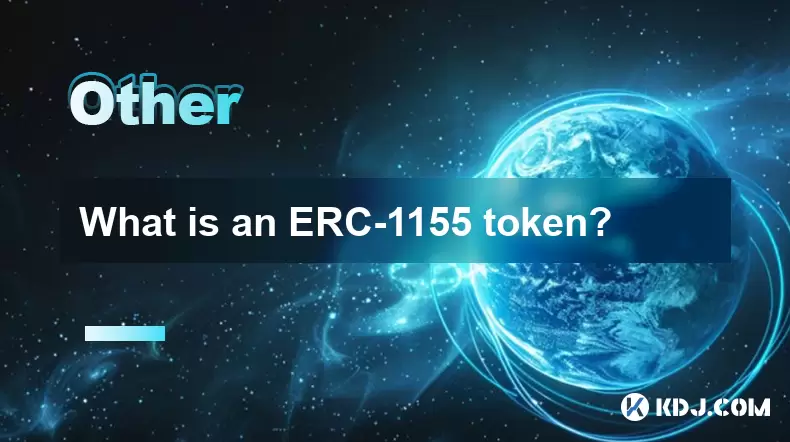
What is an ERC-1155 token?
Aug 12,2025 at 05:21am
Understanding the ERC-1155 Token StandardThe ERC-1155 token standard is a multi-token standard introduced on the Ethereum blockchain that enables the ...
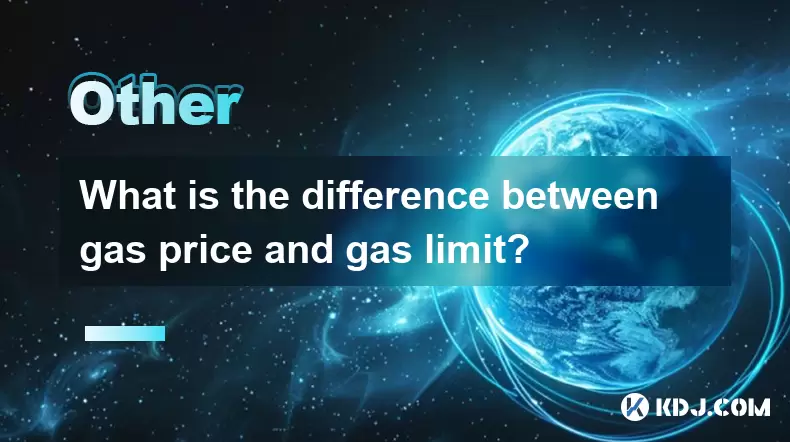
What is the difference between gas price and gas limit?
Aug 09,2025 at 08:42pm
Understanding Gas in Ethereum and EVM-Based NetworksIn blockchain networks that support smart contracts—particularly Ethereum and other EVM (Ethereum ...
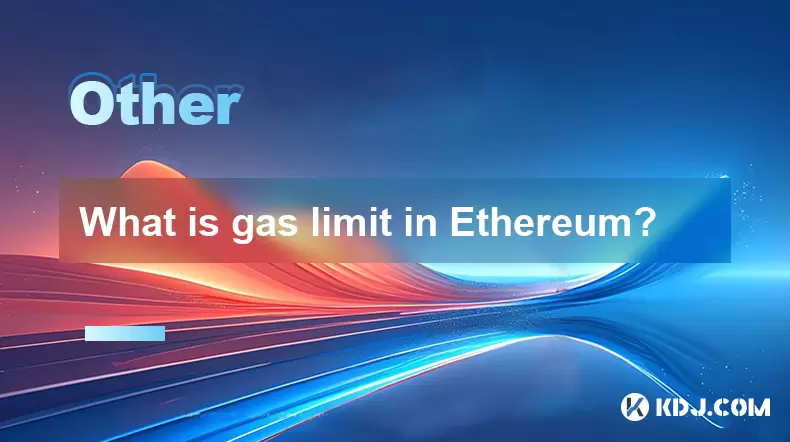
What is gas limit in Ethereum?
Aug 11,2025 at 04:29am
Understanding the Concept of Gas in EthereumIn the Ethereum network, gas is a unit that measures the computational effort required to execute operatio...
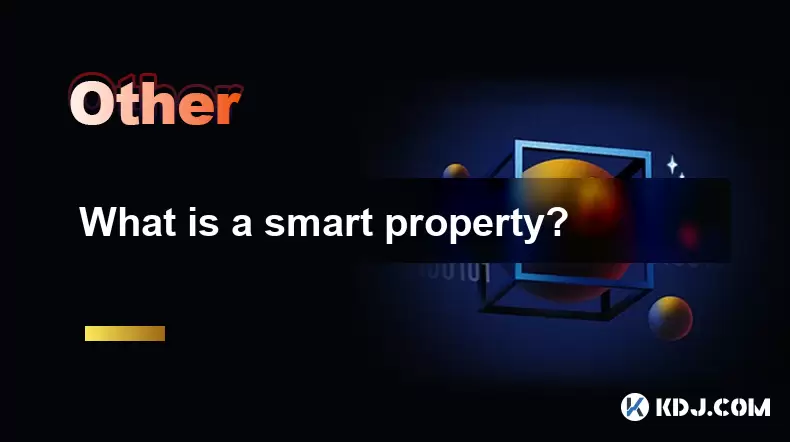
What is a smart property?
Aug 12,2025 at 05:14am
Understanding Smart Property in the Cryptocurrency EcosystemSmart property refers to physical or digital assets whose ownership and transfer are manag...

What is a "mempool"?
Aug 11,2025 at 02:49am
Understanding the Mempool in Cryptocurrency NetworksThe mempool, short for memory pool, is a critical component of blockchain networks like Bitcoin an...

How can zero-knowledge proofs enhance privacy on a blockchain?
Aug 12,2025 at 02:15am
Understanding Zero-Knowledge Proofs in Blockchain ContextZero-knowledge proofs (ZKPs) are cryptographic protocols that allow one party (the prover) to...

What is an ERC-1155 token?
Aug 12,2025 at 05:21am
Understanding the ERC-1155 Token StandardThe ERC-1155 token standard is a multi-token standard introduced on the Ethereum blockchain that enables the ...

What is the difference between gas price and gas limit?
Aug 09,2025 at 08:42pm
Understanding Gas in Ethereum and EVM-Based NetworksIn blockchain networks that support smart contracts—particularly Ethereum and other EVM (Ethereum ...

What is gas limit in Ethereum?
Aug 11,2025 at 04:29am
Understanding the Concept of Gas in EthereumIn the Ethereum network, gas is a unit that measures the computational effort required to execute operatio...

What is a smart property?
Aug 12,2025 at 05:14am
Understanding Smart Property in the Cryptocurrency EcosystemSmart property refers to physical or digital assets whose ownership and transfer are manag...

What is a "mempool"?
Aug 11,2025 at 02:49am
Understanding the Mempool in Cryptocurrency NetworksThe mempool, short for memory pool, is a critical component of blockchain networks like Bitcoin an...
See all articles

























































































